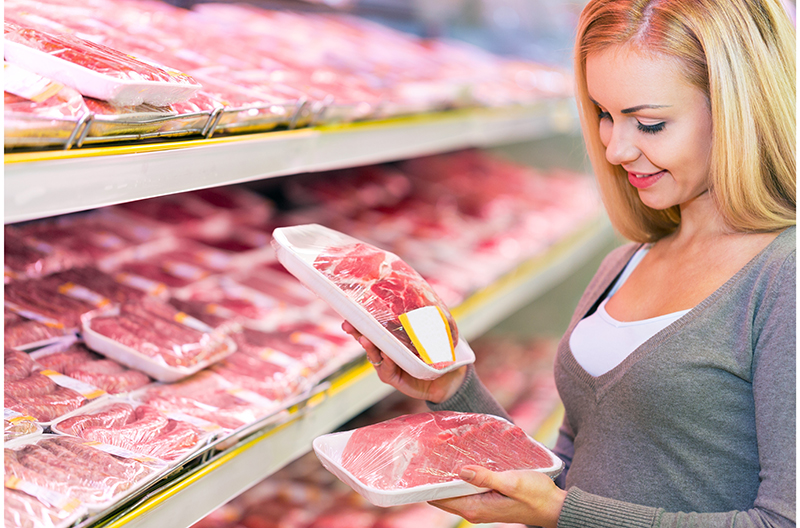Prolonged supply chain, labor, transportation and weather challenges in combination with high food inflation is resulting in an ever-changing nature of the marketplace. IRI, 210 Analytics and Marriner Marketing have brought the latest trends and analysis relative to meat department sales.
Food inflation remains extremely high and consumers are feeling the pain. They are making changes to their restaurant engagement as well as their grocery purchases, according to the August IRI survey of primary grocery shoppers.
The average price per pound in the meat department across all cuts and kinds, both fixed and random weight, stood at $4.65 in August, which was up nine cents from the July level and up 7.6 percent versus a year ago. This means meat had below-average inflation compared to total foods and beverages.
In the past few months, meat inflation has been milder than the 52-week average, indicating that the increases are moderating. Inflation in processed meat did stay in the double digits, at 12.9 percent in August.
On the fresh meat side, inflation was highest for chicken and turkey while beef and pork prices were stable. Processed meat items averaged double-digit inflation across all items, except for bacon and smoked ham.
While dollars stayed ahead of prior year levels, volume was unable to keep pace with August 2021. Additionally, volume dropped back below the pre-pandemic pound sales at a level not yet seen before. The difference with July could lie in the lack of major holidays, as well as continued supply chain and labor challenges that are leaving some retailers with sparse inventory, especially in chicken.
The down August performance put an abrupt end to the sales trend line that has moved volume closer to year ago levels since the beginning of the year. The year-on-year volume decline of 2.9 percent was the steepest since the second quarter of 2021 when sales went up against the incredible early pandemic peaks.
The weak August performance was related to the sharp drop in assortment. The average number of items per week stood at 522 in August, down from an average of 536 in the second quarter. Year-on-year, assortment was down 3.3 percent and the average number of items per store dropped by 6.6 percent when compared to 2019. The biggest loss is seen in processed items that are down to 328 items, down 9.8 percent from pre-pandemic.
Total fresh meat sales were up 3.1 percent in August. Poultry delivered big, but this was inflation driven. Beef and pork, that had much milder inflation, experienced slight year-on-year declines in both dollar and pound sales.
For more meat news from The Shelby Report, click here.

